It’s way too easy to overload your plate, especially when you have an unlimited meal plan, but again and again most of those leftovers just end up in the garbage. This isn’t just happening on college campuses; in fact, this occurs all across the United States.
According to the United States Environmental Protection Agency, in 2011 alone, the U.S. landfilled 36 million tons of food. Even worse, 96 percent of food ends up in landfills in the United States, and the gases emitted by decomposing food create greenhouse gases that directly contribute to global warming.
Each individual must be held accountable, and with a few simple lifestyle tweaks, you can easily reduce your own food waste and carbon footprint.
1. Plan Ahead
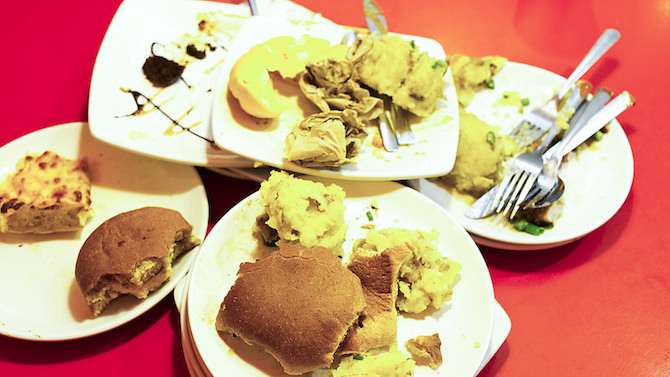
Photo by Hayden Carder
Let’s face it, grocery shopping is overwhelming. The bright isles of seemingly endless choices of food can be daunting, especially combined with your (probably) near empty wallet. We live in a materialistic age, one that highlights consumption, especially with food. And sales, advertising, and cravings only make it worse, pushing us into the vicious cycle of overspending.
Yet, there is an easy solution to ensure you do not fall into this trap, and that is to plan ahead! This not only entails coming up with a decisive shopping list before heading to the store, but also planning when and where to shop.
Do not, for example, shop when hungry. Seriously, do not. This will only lead to more consumption and ultimately more waste! If you are not necessarily the organized type, never fear! Luckily for us, there are plenty of shopping lists and meal planning apps that can help us cut down on our food spending and waste.
In your school’s dining hall, planning ahead is also a good strategy. Take a walk around and look at all your options. Ask for a sample, drink some water. This way, you won’t be eating too much, and you won’t be wasting too much!
Figure out what your campus is doing about food waste. Skidmore’s club Feedmore helps collect uneaten food and donate it to homeless populations.
2. Leftovers
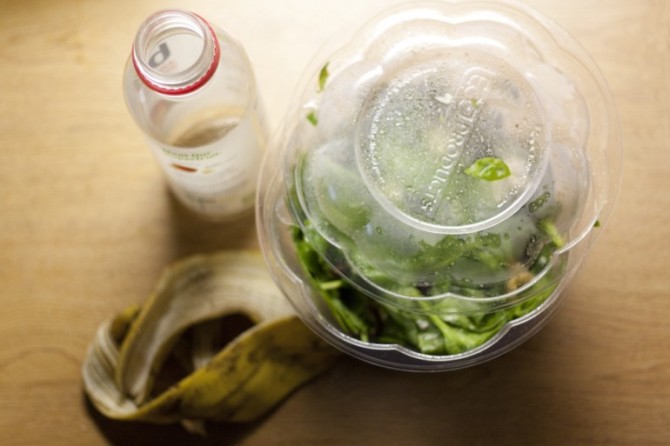
Photo by Caitlin Wolper
Leftovers might not seem like the most enticing idea, but think of it this way: according to the Natural Resources Defense Council, eating leftovers saves you money to eat the food you really want to eat! Each month, the average American throws away 20 pounds of food, between $28 to $43.
Instead of contributing negatively to the environment (and our bank accounts), we can all do our part. And, hey, now’s your chance to get creative, by turning boring scraps into yummy leftovers! Easy on you, easy on the environment. Win-win.
3. Store better
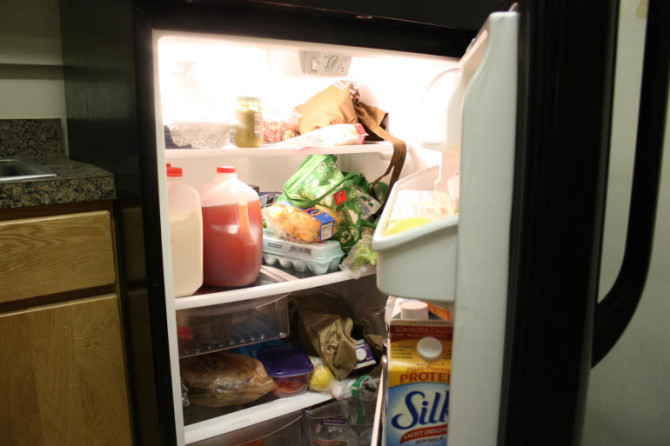
Photo by Le Yi (Alice) Zhou
How often do you have to go through your refrigerator and clean out any food that has expired? It tends to be relatively frequent for most people, but there is a simple way to cut down on how often your food goes bad: store it better.
Knowing how to salvage your food remainders in a suitable container will definitely come in handy. You can also look into how specific food (vegetables, fruits, eggs, etc.) should be stored. This is a sure-fire way to help you cut down on waste.
4. Reduce, reuse, recycle
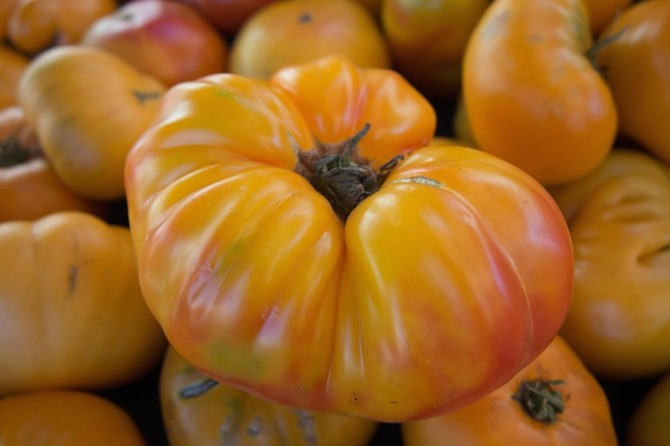
Photo by Luna Zhang
When buying food, it is important to be aware of where you’re buying it and where the food is coming from. Buying local, for example, is another way to reduce waste. Not only are you supporting local farmers and producers, but you are also significantly cutting down on food transportation.
Also, know how to carry your food. Using reusable bags not only cuts down on waste, because, as the name suggests, you can use the same bag over and over, but let’s be real: plastic sucks. Not only is it hard to break down, but animals can get stuck in them, and they’re always breaking.
Using just one bag, then, can decrease demand for one-time-use bags. You can even use reusable sandwich and snack bags!
5. Donate
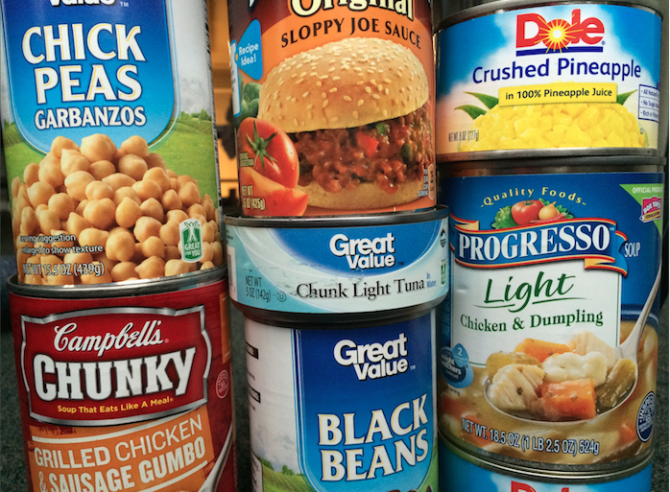
Photo by Rachel Williamson
If you have too much food, especially too much non-perishable food, donating is always a great solution. Not only is it helping those in need, it is good for the environment and good for the soul!
Rather than simply throwing out remaining food, your leftover goods can help someone in need. If you happen to still be buying too much for yourself, don’t fret, just find the closest food bank or food pantry near you.
For everyone with an unlimited meal plan, you can donate your leftover meal swipes at the end of the semester. Various colleges and universities across the United States are coming together to donate any remaining meal swipes to homeless shelters.
6. Compost

Photo by Helen Poon
Composting not only reduces waste, but it produces soil that can be used to grow more food.
Once you are done using up an ingredient (such as a banana or an egg), you can put the shells/peels/skins in a compost bag for composting, instead of relying on already overflowing landfills which cost millions of dollars a year. So take what you don’t need, and create soil for a plant seed.
Don’t stop now, check out these articles to learn more:


